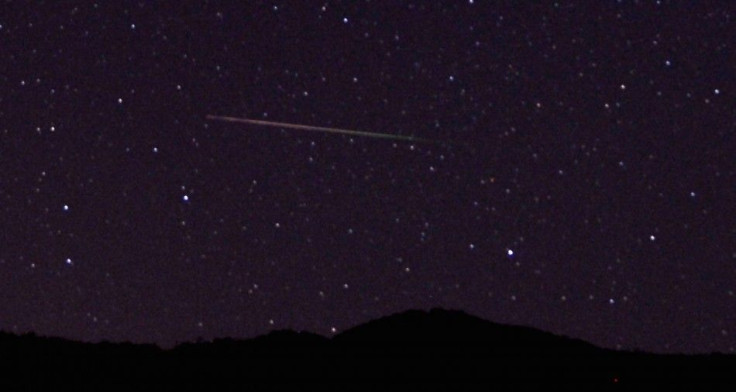Geminids Meteor Shower Guide: How And When To View The ‘Best’ Meteor Shower Plus Where To Watch Online Via Live Stream

Mark your calendars! December sky is offering a delightful experience for the sky gazers and astronomy enthusiasts. Before the year ends, sky watchers can enjoy spectacular view in the wake of Geminids meteor shower that has already begun and will last until Dec. 17, 2014.
However, the best view is yet to come. Geminids meteor shower peaks on the evening of Dec. 13 and morning of Dec. 14. Sea and Sky's Astronomy Reference guide describes the astronomical event as the "best showers in heaven" and "the king of the meteor showers."
It produces 100 - 120 meteors every hour when it is at its peak. Furthermore, it even features multicoloured meteors caused by an asteroid called 3200 Phaethon. The best time to catch the meteor is late night as the shower "intensifies as evening deepens into late night," according to Earth Sky.
According to the aforementioned publication dedicated to astronomy news, the meteor shower "favours" Northern Hemisphere but is can also be seen in Southern Hemisphere, especially those in temperate latitude. The report notes that December's Geminids shower is "reliable and prolific shower." Astronomy enthusiasts must watch out for some meteors on the night before the shower peaks.
The report notes that no "special equipment" is required to view the spectacular astronomical event in the December night sky. In order to enjoy it fully, one must look out for a "dark" location away from city lights with an "open sky." It is said the "peak is typically centered at about 2 a.m. local time, no matter where you are on the globe." It is the time when constellation Gemini will "reach its highest point for the night." Furthermore, it must be noted that the meteors will be visible in the entire sky and not just the "shower's radiant point." Don't forget to carry your camera and something to keep you warm in the night.
According to Universe Today, the speed of the meteors is "moderate as compared to some showers." In the past, the shower has reportedly produced streams of bright green, red, blue, yellow and white coloured meteors-which is why it is considered the most colourful meteor shower.
To be more specific, Mirror UK notes that the best time to view Geminids meteor shower is from 9:00 pm to 3:00 am, in whichever part of the world you are. The first time the meteor shower was reported was in mid-1800s, but the shower was not as vivid as it is now. It seems, with time the intensity is only increasing.
Geminids meteor shower can also be witnessed online via live stream as various astronomy websites are hosting webcast. Slooh will commence the show on Sunday, Dec. 14 at 1:00 am UTC and Virtual Telescope will begin its webcast on Dec. 14 at 2:00 am UT.




















